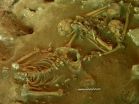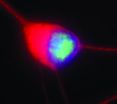(Press-News.org) A team of academics from the University of Leicester has been instrumental in shaping National Institute for Health and Care Excellence (NICE) guidance that will influence medical policy towards diabetes prevention nationwide.
NICE's recommendations in the form of a local government briefing, which have been developed with advice from NICE's Local Government Reference Group using feedback from council officers, councillors and directors of public health, encourage local authorities and partner organisations to use body mass index (BMI) as a signal for preventive action against long-term medical conditions, such as diabetes.
The Leicester Diabetes Centre has a close relationship with NICE. The Leicester Diabetes Centre is an alliance between the University Hospitals of Leicester NHS Trust (Leicester's Hospitals), the University of Leicester, the local community and Primary Care and is located at Leicester General Hospital.
Professor Kamlesh Khunti, of the University of Leicester, was Chair of the NICE Early Identification and Prevention of Diabetes Guidance Group and Professor Melanie Davies and Dr Thomas Yates, from the University of Leicester and Leicester Hospitals, were also members of this group.
Dr Danielle Bodicoat from the Leicester Diabetes Centre, who performed the analysis for the study, said: "This new guidance will mean that more people will receive interventions to help them make such changes earlier, which is very important if we are to halt the rise in diabetes. Action now will result in significant social care and health savings, by delaying and improving the management of complications associated with limiting long-term illnesses."
The focus is on people from black, Asian and other minority ethnic groups. The prevalence of chronic conditions such as type 2 diabetes, coronary heart disease and stroke is up to 6 times higher, and occurs from a younger age, among these groups.
In addition, these groups progress from being at-risk to being diagnosed with these conditions at twice the rate of white populations.
Existing lifestyle interventions targeting sedentary lifestyles and diet have reduced the incidence of diabetes by about 50% among high-risk individuals. This includes people from South Asian, Chinese, black African and African Caribbean descent with a BMI of 23 kg/m2 or more, where interventions to identify and manage pre-diabetes have been found to be cost effective.
Diabetes, however, is the most common cause of visual impairment and blindness among people of working age and the most common cause of kidney failure and non-traumatic lower limb amputations. NICE's guidelines will put greater focus on preventing diabetes in high-risk individuals.
Dr Bodicoat added: "The number of people who have diabetes is rapidly increasing and is one of the biggest challenges currently facing our healthcare system. We know that this can be prevented, especially by increasing physical activity and eating a healthier diet."
INFORMATION:NICE's local government briefing 'Body mass index thresholds for intervening to prevent ill health among black, Asian and other minority ethnic groups', is available at: http://www.nice.org.uk/localgovernment/PublicHealthBriefingsForLocalGovernment.jsp.
The research paper published by PLOS ONE that accompanies the work presented to NICE can be found here (after embargo lifts): http://dx.plos.org/10.1371/journal.pone.0090813
New guidance for preventative action against diabetes
University of Leicester academics help shape National Institute for Health and Care Excellence guidance
2014-03-06
ELSE PRESS RELEASES FROM THIS DATE:
Penn team finds a new structure in dogs' eye linked to blinding retinal diseases
2014-03-06
In humans, a tiny area in the center of the retina called the fovea is critically important to viewing fine details. Densely packed with cone photoreceptor cells, it is used while reading, driving and gazing at objects of interest. Some animals have a similar feature in their eyes, but researchers believed that among mammals the fovea was unique to primates — until now.
University of Pennsylvania vision scientists report that dogs, too, have an area of their retina that strongly resembles the human fovea. What's more, this retinal region is susceptible to genetic blinding ...
Researchers gain new insights into ancient Pacific settlers' diet
2014-03-06
Researchers from New Zealand's University of Otago studying 3000-year-old skeletons from the oldest known cemetery in the Pacific Islands are casting new light on the diet and lives of the enigmatic Lapita people, the likely ancestors of Polynesians.
Their results—obtained from analysing stable isotope ratios of three elements in the bone collagen of 49 adults buried at the Teouma archaeological site on Vanuatu's Efate Island—suggest that its early Lapita settlers ate reef fish, marine turtles, fruit bats, free-range pigs and chickens, rather than primarily relying on ...
Atypical development in the siblings of children with autism is detectable at 12 months
2014-03-06
(SACRAMENTO, Calif.) — Atypical development can be detected as early as 12 months of age among the siblings of children with autism spectrum disorder, a study published by researchers with the UC Davis MIND Institute and UCLA has found.
Published online in the Journal of the American Academy of Child and Adolescent Psychiatry, the study found that close to half of the younger siblings of children with autism spectrum disorder (ASD) develop in an atypical fashion, with 17 percent developing ASD and another 28 percent showing delays in other areas of development or behavior. ...
Study: Alzheimer's disease a much larger cause of death than reported
2014-03-05
MINNEAPOLIS – A new study suggests that Alzheimer's disease may contribute to close to as many deaths in the United States as heart disease or cancer. The research is published in the March 5, 2014, print issue of Neurology®, the medical journal of the American Academy of Neurology.
Currently, Alzheimer's disease falls sixth on the list of leading causes of death in the United States according to the Centers for Disease Control and Prevention (CDC), whereas heart disease and cancer are numbers one and two, respectively. These numbers are based on what is reported on ...
Restless legs syndrome may signify bigger health problems
2014-03-05
(Boston)--A nationally-recognized sleep expert has published an editorial describing Restless Legs Syndrome (RLS) as a possible biomarker for underlying disease. The editorial appears in the March 5, 2014 issue of Neurology the medical journal of the American Academy of Neurology and was authored by Boston Medical Center neurologist Sanford H. Auerbach, MD.
RLS is a disorder of the nervous system. Patients with RLS have uncomfortable sensations in their legs which lead to an overwhelming urge to move them – most often at night or whenever the patient is resting.
The ...
Applying math to cancer, climate, crime and cameras
2014-03-05
Improving radiation therapies for cancer mathematically
In a paper published in December in the SIAM Journal on Scientific Computing, authors Li-Tien Cheng, Bin Dong, Chunhua Men, Xun Jia, and Steve Jiang propose a method to optimize radiation therapy treatments in cancer patients.
Radiation therapy is one of the primary methods used for cancer treatment, along with chemotherapy and surgery. While doses of radiation are delivered to eliminate cancerous tissue, care is taken to keep radiation within acceptable levels so as not to affect neighboring tissues and organs. ...
3-D changes in DNA may lead to a genetic form of Lou Gehrig's disease
2014-03-05
New findings reveal how a mutation, a change in the genetic code that causes neurodegeneration, alters the shape of DNA, making cells more vulnerable to stress and more likely to die.
The particular mutation, in the C9orf72 gene, is the most common cause for amyotrophic lateral sclerosis (ALS, also known as Lou Gehrig's disease), and frontotemporal degeneration (FTD), the second most common type of dementia in people under 65.
This research by Jiou Wang, Ph.D., and his colleagues at Johns Hopkins University (JHU) was published in Nature and was partially funded by ...
Look back at US soybeans shows genetic improvement behind increased yields
2014-03-05
URBANA, Ill. – Soybean improvement through plant breeding has been critical over the years for the success of the crop. In a new study that traces the genetic changes in varieties over the last 80 years of soybean breeding, researchers concluded that increases in yield gains and an increased rate of gains over the years are largely due to the continual release of greater-yielding cultivars by breeders.
"This research in some ways looks back and informs us how soybean varieties have changed. It's useful to document these traits and changes," said Brian Diers, a University ...
Fertility prospects following ectopic pregnancy
2014-03-05
WINSTON-SALEM, N.C. – March 5, 2014 – Preserving a fallopian tube following an ectopic pregnancy seems like it would favor a woman's fertility prospects, right?
A new study from Wake Forest Baptist Medical Center looked at pregnancy outcomes in regards to the two surgical treatments for ectopic pregnancy -- salpingectomy, in which the affected fallopian tube is removed, or salpingotomy, in which the tube is preserved.
The aim of the study, said co-author Tamer Yalcinkaya, M.D., a reproductive endocrinologist at Wake Forest Baptist, was to assess whether salpingotomy ...
Maize and bacteria: A 1-2 punch knocks copper out of stamp sand
2014-03-05
Scientists have known for years that together, bacteria and plants can remediate contaminated sites. Ramakrishna Wusirika, of Michigan Technological University, has determined that how you add bacteria to the mix can make a big difference.
He has also shed light on the biochemical pathways that allow plants and bacteria to clean up some of the worst soils on the planet while increasing their fertility.
Wusirika, an associate professor of biological sciences, first collected stamp sands near the village of Gay, in Michigan's Upper Peninsula. For decades, copper mining ...
LAST 30 PRESS RELEASES:
New modeling approach sheds light on rare gut disease
Study documents potentially hazardous flame retardants in firefighter gear
Can certain bacteria regulate aging of the immune system and its related alterations?
AI model helps diagnose often undetected heart disease from simple EKG
There are fewer online trolls than people think
Cell membrane fluctuations produce electricity
Jeonbuk National University study shows positive parenting can protect adolescents against self-harm
Surface-engineered ZnO nanocrystals to tackle perfluoroalkyl substance contamination
This new understanding of T cell receptors may improve cancer immunotherapies
A new fossil face sheds light on early migrations of ancient human ancestor
A new immunotherapy approach could work for many types of cancer
A new way to diagnose deadly lung infections and save lives
40 percent of MRI signals do not correspond to actual brain activity
How brain-inspired algorithms could drive down AI energy costs
Gum disease may be linked to plaque buildup in arteries, higher risk of major CVD events
Contrails are a major driver of aviation’s climate impact
Structure of dopamine-releasing neurons relates to the type of circuits they form for smell-processing
Reducing social isolation protects the brain in later life
Keeping the heart healthy increases longevity even after cancer
Young adults commonly mix cannabis with nicotine and tobacco
Comprehensive review illuminates tau protein's dual nature in brain health, disease, and emerging psychiatric connections
Book prepares K-12 leaders for the next public health crisis
Storms in the Southern Ocean mitigates global warming
Seals on the move: Research reveals key data for offshore development and international ecology
Sports injuries sustained during your period might be more severe
World's first successful 2 Tbit/s free-space optical communication using small optical terminals mountable on satellites and HAPS
Can intimate relationships affect your heart? New study says ‘yes’
Scalable and healable gradient textiles for multi‑scenario radiative cooling via bicomponent blow spinning
Research shows informed traders never let a good climate crisis go to waste
Intelligent XGBoost framework enhances asphalt pavement skid resistance assessment
[Press-News.org] New guidance for preventative action against diabetesUniversity of Leicester academics help shape National Institute for Health and Care Excellence guidance



